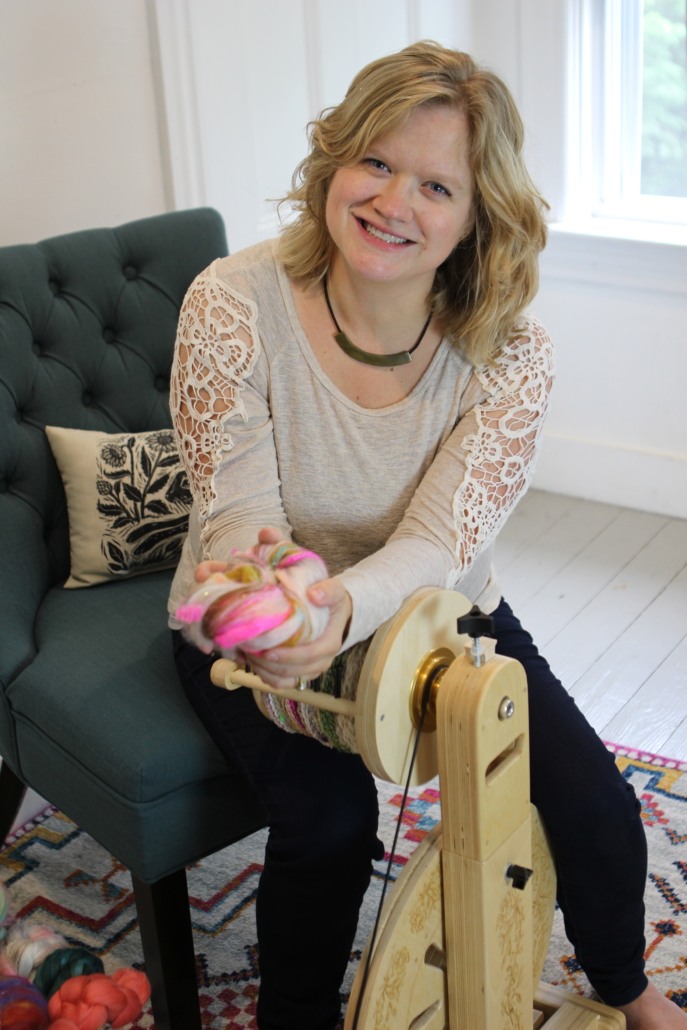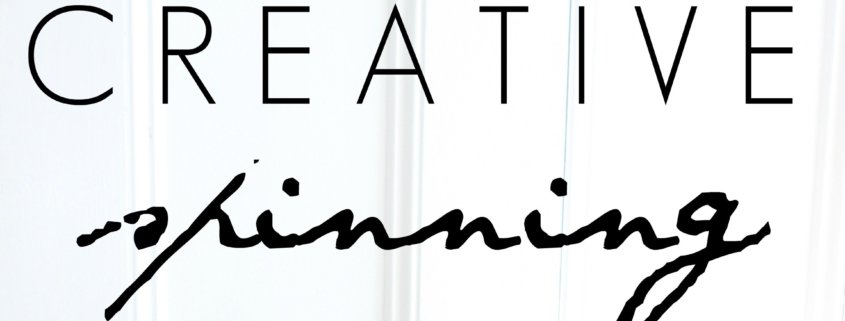Learning to Spin Online
words by Ashley Martineau
As I was writing my book, Spinning and Dyeing Yarn, I noticed several challenges of teaching from a book. It felt nonsensical, like learning how to ride a bike by reading a sentence and looking at still photos. I realized if I was going to effectively reach my students, I needed a different avenue of instruction.
In 2015, I organized all I’d ever learned about spinning yarn into 60 methods to teach with multiple fiber types and preps. Then I started recording videos while my babies napped. Last year I started uploading these videos weekly to YouTube to inspire the next generation of textile designers and yarn spinners. I’ve already published over 40 of these videos online and continue to post them weekly.
My goal in this work was to teach anyone anywhere how to spin yarn and to provide the resources lacking on the internet when I was trying to learn from home. It does not replace the value of in-person instruction but can be a helpful resource to learn how to spin when you are isolated, can’t afford a teacher, or don’t have instructors or wool festivals in your area.
After the events of 2020, I especially hope to reach those who are looking to replace lost income by working from home (many yarn shops will gladly purchase locally spun handspun yarns at wholesale or consignment pricing) and to parents who want to provide extracurricular art instruction to their children while unexpectedly homeschooling this fall. I also want to give the next generation of textile designers and creative minds some inspiration as they navigate online college coursework.
Other Resources
- There are many online handspinning instructors who have free lessons on YouTube when you search for “spinning yarn” or “how to spin yarn.”
- Some spinning teachers allow you to purchase a one-on-one virtual class with them. Look for the authors of your favorite spinning books and see if they provide this option.
- Perhaps a handspinner you admire with an online shop or social media presence might be available for a paid one-on-one zoom or skype class.
- When the world opens again, visit your local sheep and wool festival to take a class in person. In person instruction is the highest level of instruction you can find.
- Local yarn shops often have spinning classes available, with wheels to test drive before you purchase.
Wheel Recommendations
I recommend SpinOlution wheels for the methods I teach in my video series, as creative yarn textures require an open orifice and bypassable flyer to prevent textures getting stuck or snagged. If you have a wheel with a small bobbin, ratios faster than 1:6, a small orifice, and a closed flyer system (tiny hooks or loop), you will need to drastically minimize the textures of my videos to get them to smoothly fit through your orifice and onto your bobbin. Hand winding is common when you are using a wheel that isn’t engineered to spin untraditional texture or you’re spinning bulkier than what the wheel was engineered to uptake.
You can find a SpinOlution dealer to take a test drive and learn how to spin yarn on a wheel engineered to spin both traditional yarns and creative textures. Many SpinOlution dealers are happy to teach spinning classes virtually thru zoom or other video conferencing software.
I hope you find these resources helpful as you stay safe this season and discover your new favorite creative spinning methods. Being a teacher is a privilege I don’t take lightly, and I am excited to meet the next generation of spinners who will blow me away with their talent.

Ashley Martineau, author of Spinning and Dyeing Yarn, teaches new spinning methods at howtospinyarn.com on YouTube. Ashley hopes to inspire spinners of all ages around the world to embrace their own creativity and create new, unique textures of yarn for use in fashion, craft, and art. When Ashley isn’t spinning yarn, she’s homeschooling her 3 kids, weaving tapestries inspired by ancient civilizations, and working with the SpinOlution company to create new features for their spinning wheels.
You can watch all of Ashley’s videos on her website, which has playlists designed to be watched in consecutive order on topics such as single-ply methods, plying methods, corespinning methods, and creative drop spindle methods. Special thanks goes to these generous fiber contributors, without which this series would not be possible.
PLY Magazine believes that Black lives matter, as well as LBGTQI+ lives. Those most vulnerable and persecuted in our communities deserve our love and support. Please be good to each other.




Leave a Reply
Want to join the discussion?Feel free to contribute!